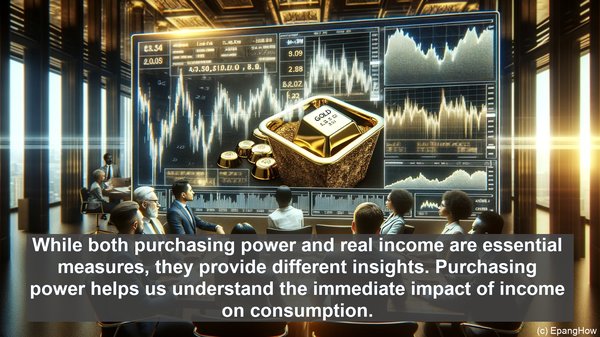Introduction: The Importance of Economic Measures
Hello, everyone! In the realm of economics, various measures help us gauge the financial well-being of individuals and nations. Two such measures, purchasing power and real income, play a pivotal role in understanding economic dynamics. While they may seem similar at first, they have distinct implications. Today, we’ll explore these concepts, their differences, and why they matter.

Defining Purchasing Power
Purchasing power refers to the amount of goods and services an individual or a group can buy with a specific amount of money. It’s essentially the ability to make purchases. For instance, if you have $100, and the cost of a particular item is $10, your purchasing power allows you to buy ten of those items. It’s a measure of the quantity of goods or services that money can acquire.

Unpacking Real Income
Real income, on the other hand, is the income adjusted for inflation. It takes into account the changes in the general price level over time. While nominal income reflects the actual dollar amount one earns, real income factors in the purchasing power of that income. It helps us understand the income’s actual value in terms of what it can buy in the current market. Real income is a crucial indicator of the standard of living and economic well-being.
The Role of Inflation
Inflation, the general increase in prices, affects both purchasing power and real income. When prices rise, the purchasing power decreases as you can buy fewer goods or services with the same amount of money. Real income also takes a hit if the increase in income doesn’t keep up with inflation. For instance, if your income increases by 5% but the prices rise by 10%, your real income has actually decreased. Inflation erodes the value of both money and income, impacting the overall economy.
Understanding the Significance
While both purchasing power and real income are essential measures, they provide different insights. Purchasing power helps us understand the immediate impact of income on consumption. It’s crucial for individuals and businesses to assess their ability to buy goods or invest. Real income, on the other hand, gives us a long-term perspective. It helps us analyze trends, assess changes in the cost of living, and evaluate the economic well-being of a population over time. By considering both measures, we can gain a comprehensive understanding of an economy’s dynamics.
